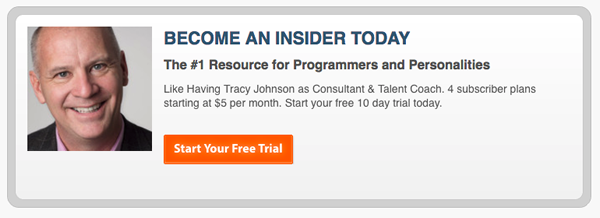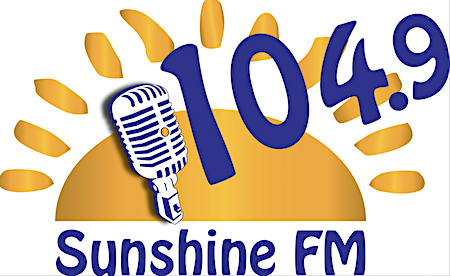If it’s on the air, promote it

Here are some profound programming words to live by that are more relevant heading in to 2019 than ever before: If it’s on the air, promote it! If you won’t promote it, take it off.
This simple formula will clean up your radio station and make everything left on the air more valuable. As I demonstrate in my Double Your Ratings seminar on demand, nearly every radio show can double their ratings by getting one more quarter hour of listening per day and one more day per week.
Promoting specific content with great teases is the most effecting way to achieve this goal. Some stations have seen their share explode with an intense focus on mastering this technique. Yet most stations aren’t taking advantage of these opportunities.
Programming & Promotion Focus
Focus is a core discipline of success that has been proven successful in virtually all industries, from restaurants to technology to radio stations.
The concept of Concentration of Force is about specializing in fewer things and executing them with intense focus. It works.
With that in mind, here’s a nearly fool-proof way to clean up your station, ensure that every element on the air is successful and generate more listening occasions.
If It’s On The Air, Promote It
If it’s not promotable, it should be improved to make it more exciting, so you want to promote it. Otherwise, take it off the air because it’s not getting you anywhere. then use the time and resources to promote something that will build equity.
This is a shortcut version of Zero Based Programming. And remember, this applies to everything, including those information segments.
In many markets, it’s common for even some music-intensive stations to air:
- A 2-minute newscast each half hour (2 per hour).
- A 60-second traffic report every quarter-hour (4 per hour)
- A 20-second weather report every quarter hour (4 per hour)
- A 3-minute entertainment Report every hour
Add it up. That’s more than 12 minutes of information every hour. That’s equal to three songs-or more! It’s probably at least as much, maybe more, than personality content in each hour.
That makes it prominent, if not important.
Yet I rarely hear those segments promoted. Sometimes a station will toss in a promo for the Entertainment segment, but it’s more common to hear information programming treated like commercials. Talent and programmers ignore them.
In the last few months, I’ve made it a point to ask about it on client stations. Programmers typically say either,
Those elements aren’t promotable.
In other words, I don’t like them, they’re a tune out and they’re in the way. So why don’t we take them off the air?
Or, they might say:
It’s hard to find time to promote them in our format clock.
This is usually due to a lack of creativity in finding ways to promote. Those opportunities are there if you look for them.
Finding Time To Promote
There are many ways to insert teases for information content.
Before the Update: The most common way to promote is teasing stories coming up a few minutes before the report with a tune-in invitation for the exact time:
Did you sleep with the windows open last night? Then you’re waking up to the smell of smoke this morning. And you won’t believe what caused this fire to break out. (Name) will tell you at (time).
Notice how this promo is active and listener-based. It doesn’t sound like a boring, fact-filled newscast. It’s a story.
At The Beginning Of The Report: Don’t lead with the top story in the report. It’s what listeners are most likely to be interested in, so lead them through the newscast with a tease for the top story, which will be presented at the end of the report:
When can you get that new iPhone? Apple just announced it, and I’ll tell you when and where to get your hands on it in less than a minute…but first…
After the tease, read two or three other stories before presenting the featured information. This gets them through the newscast and adds energy, pace and momentum.
During The Report: Most stations go into too many details in each information report. Lighten up on the facts and include clever copy points inside the story to get another tune in occasion:
The principle at (school) says all is back to normal this morning. Classes start in 20 minutes after the bomb scare yesterday. It turned out to be a hoax, but 7th grader Amanda Jones says it’s not a normal day at all. She tells us what it was like when the panic set in at 7:45.
This sounds like a story, and it does have some information value, but it’s really a tease for the next newscast. If you can lead them through content that may not interest them to get something they want.
At The End: Never end any element without a reason to stay tuned or remember to come back. The tease should be relevant to the audience most likely to have stayed through the existing content, though. For example, the end of a newscast is a perfect time to promote an Entertainment Report, and vice-versa:
In the next update, the real story of why you’re paying more for gas this week. That story at 8:12…and, Taylor Swift just broke up with her boyfriend in the worst way possible. Find out what happened in her relationship with (name ) in (Entertainment Report) at 7:55.
Conclusion
Promotion doesn’t have to be a recorded promo or a commercial for your content. In fact, it should be more subtle than obvious.
Embedding promotion into the format takes time and thought, but it pays off in quarter hours! Apply these ideas to every aspect of the station. Even the information elements!
The alternative is to take it off the air. Seriously.
No matter what you do, if it’s on the air, promote it.
Tracy Johnson specializes in radio talent coaching, radio consulting for programming and promotions and developing digital strategies for brands.



